NPs Basic Information

|
Name |
Tetramethylkaempferol
|
| Molecular Formula | C19H18O6 | |
| IUPAC Name* |
3,5,7-trimethoxy-2-(4-methoxyphenyl)chromen-4-one
|
|
| SMILES |
COC1=CC=C(C=C1)C2=C(C(=O)C3=C(O2)C=C(C=C3OC)OC)OC
|
|
| InChI |
InChI=1S/C19H18O6/c1-21-12-7-5-11(6-8-12)18-19(24-4)17(20)16-14(23-3)9-13(22-2)10-15(16)25-18/h5-10H,1-4H3
|
|
| InChIKey |
YZWIIEJLESXODL-UHFFFAOYSA-N
|
|
| Synonyms |
Tetramethylkaempferol; 16692-52-7; o-Tetramethylkaempferol; 3,4',5,7-tetramethoxyflavone; 3,5,7,4'-Tetramethoxyflavone; 3,5,7,4'-Tetra-O-methylkaempferol; 2-(4-Methoxyphenyl)-3,5,7-trimethoxy-4H-1-benzopyran-4-one; 3,5,7-trimethoxy-2-(4-methoxyphenyl)chromen-4-one; CHEMBL356036; 3,5,7-Trimethoxy-2-(4-methoxyphenyl)-4H-1-benzopyran-4-one; 4H-1-Benzopyran-4-one, 3,5,7-trimethoxy-2-(4-methoxyphenyl)-; 960ZC9V914; 2-(4-Methoxyphenyl)-3,5,7-trimethoxy-4-oxo-4H-1-benzopyran; UNII-960ZC9V914; Flavone, 3,4',5,7-tetramethoxy-; SCHEMBL1664159; 3,5,7-Trimethoxy-2-(4-methoxy-phenyl)-chromen-4-one; DTXSID801309500; BDBM50049398; LMPK12112699; AKOS032961907; DB-117064; FT-0777773; Q27271837; 3,5,7-Trimethoxy-2-(4-methoxyphenyl)-4H-chromen-4-one #
|
|
| CAS | 16692-52-7 | |
| PubChem CID | 631095 | |
| ChEMBL ID | CHEMBL356036 |
*Note: the IUPAC Name was collected from PubChem.
Chemical Classification: |
|
|
|---|
——————————————————————————————————————————
NPs Species Source
| Endophyte ID | Endophyte Name | Family | Genus | Taxonomy ID | GenBank ID | Closest GenBank ID | Reference | |
|---|---|---|---|---|---|---|---|---|
| Endophyte ID | Endophyte Name | Family | Genus | Taxonomy ID | GenBank ID | Closest GenBank ID | Reference |
NPs Biological Activity
| Bioactivity Name | Target ID | Target Name | Target Type | Target Organism | Target Organism ID | Potency of Bioactivity | Activity Type | Value | Unit | Endophyte ID | Endophyte Name | |
|---|---|---|---|---|---|---|---|---|---|---|---|---|
| Bioactivity Name | Target ID | Target Name | Target Type | Target Organism | Target Organism ID | Potency of Bioactivity | Activity Type | Value | Unit | Endophyte ID | Endophyte Name |
NPs Physi-Chem Properties
| Molecular Weight: | 342.3 | ALogp: | 3.3 |
| HBD: | 0 | HBA: | 6 |
| Rotatable Bonds: | 5 | Lipinski's rule of five: | Accepted |
| Polar Surface Area: | 63.2 | Aromatic Rings: | 3 |
| Heavy Atoms: | 25 | QED Weighted: | 0.691 |
——————————————————————————————————————————
NPs ADMET Properties*
ADMET: Absorption
| Caco-2 Permeability: | -4.638 | MDCK Permeability: | 0.00004990 |
| Pgp-inhibitor: | 1 | Pgp-substrate: | 0 |
| Human Intestinal Absorption (HIA): | 0.005 | 20% Bioavailability (F20%): | 0.002 |
| 30% Bioavailability (F30%): | 0.014 |
——————————————————————————————————————————
ADMET: Distribution
| Blood-Brain-Barrier Penetration (BBB): | 0.079 | Plasma Protein Binding (PPB): | 77.28% |
| Volume Distribution (VD): | 0.948 | Fu: | 17.88% |
——————————————————————————————————————————
ADMET: Metabolism
| CYP1A2-inhibitor: | 0.864 | CYP1A2-substrate: | 0.971 |
| CYP2C19-inhibitor: | 0.857 | CYP2C19-substrate: | 0.689 |
| CYP2C9-inhibitor: | 0.849 | CYP2C9-substrate: | 0.939 |
| CYP2D6-inhibitor: | 0.263 | CYP2D6-substrate: | 0.937 |
| CYP3A4-inhibitor: | 0.801 | CYP3A4-substrate: | 0.459 |
——————————————————————————————————————————
ADMET: Excretion
| Clearance (CL): | 5.487 | Half-life (T1/2): | 0.33 |
——————————————————————————————————————————
ADMET: Toxicity
| hERG Blockers: | 0.07 | Human Hepatotoxicity (H-HT): | 0.155 |
| Drug-inuced Liver Injury (DILI): | 0.96 | AMES Toxicity: | 0.594 |
| Rat Oral Acute Toxicity: | 0.083 | Maximum Recommended Daily Dose: | 0.076 |
| Skin Sensitization: | 0.139 | Carcinogencity: | 0.051 |
| Eye Corrosion: | 0.004 | Eye Irritation: | 0.357 |
| Respiratory Toxicity: | 0.127 |
——————————————————————————————————————————
*Note: the ADMET properties was calculated by ADMETlab 2.0. Reference: PMID: 33893803.
Similar Compounds*
Compounds similar to EMNPD with top10 similarity:
| Similar NPs | Similar Drugs | ||||||
|---|---|---|---|---|---|---|---|
| NPs ID | NPs 2D Structure | Similarity Score | TTD ID | Drug 2D Structure | Similarity Score | ||
| ENC002205 | 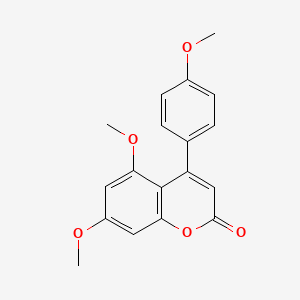 |
0.688 | D06GCK |  |
0.448 | ||
| ENC001772 |  |
0.527 | D0A8FB | 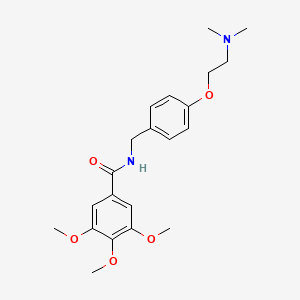 |
0.370 | ||
| ENC005880 |  |
0.490 | D02LZB | 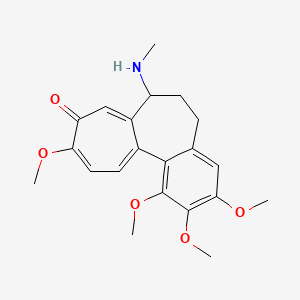 |
0.368 | ||
| ENC002952 | 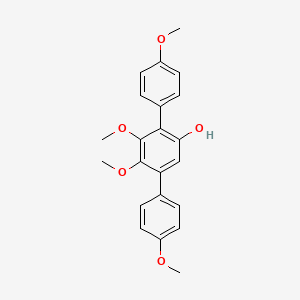 |
0.490 | D0NJ3V |  |
0.356 | ||
| ENC001442 |  |
0.461 | D09DHY |  |
0.351 | ||
| ENC006013 | 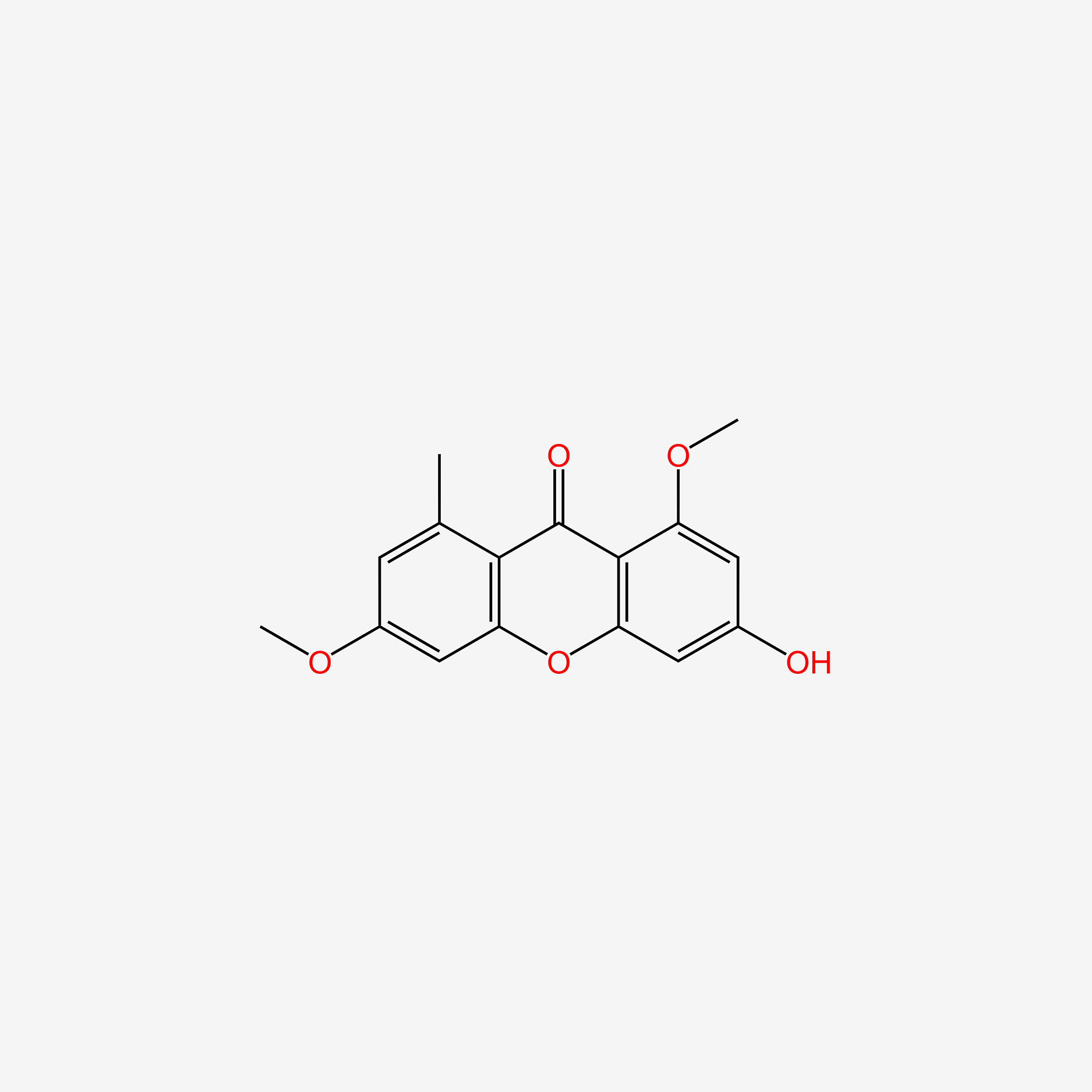 |
0.455 | D01FFA | 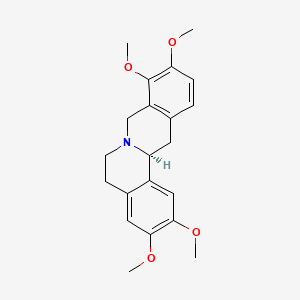 |
0.333 | ||
| ENC005870 |  |
0.444 | D0VU8Q | 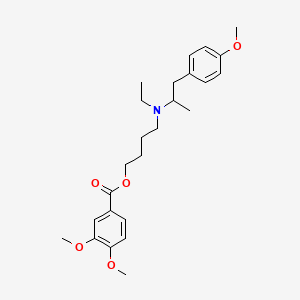 |
0.319 | ||
| ENC005871 |  |
0.444 | D0Y7TS |  |
0.318 | ||
| ENC005522 | 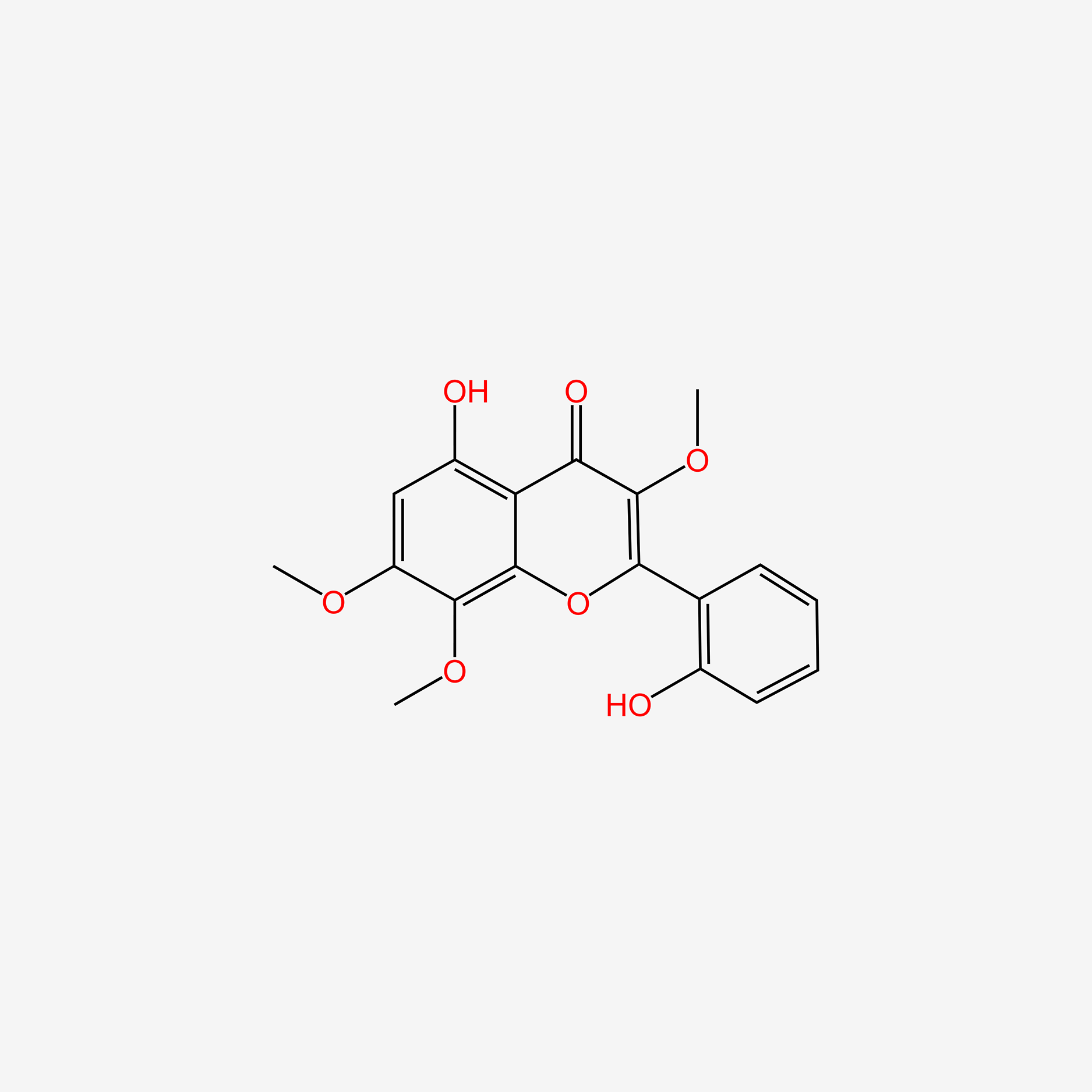 |
0.433 | D0G4KG | 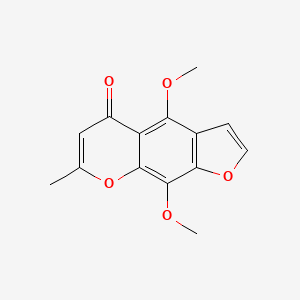 |
0.309 | ||
| ENC002404 |  |
0.432 | D0K8KX | 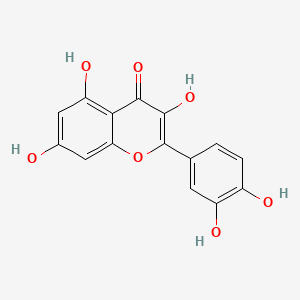 |
0.300 | ||